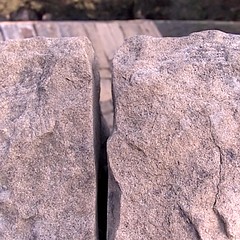 |
It turns out that the Lytro camera is using a CMOS sensor rather than a CCD. I'm not knowledgeable about this technology but apparently the primary up side is faster transfer of data off the sensor. That can be a significant advantage for a product that wants to be an easy to use point and shoot. I've been impressed with the Lytro's cycle time between pictures and this probably helps explain why it is so fast.
Another potential problem I mentioned was optics. Based on an interview with Lytro Executive Chairman Charles Chi that I link to in the "Related Articles" section below this may not be an issue either. Chi notes that
What we're trying to capture is rays of light, and the more of them we have, the more interesting things we can do for imaging. There's a lot we can do for lens correction, aberration; we can do much more dramatic 3D effects, refocus effects.
The implication here is that while its nice to have high quality optics it isn't vital. Some amount of correction can happen as part of the post processing.
Given all that I think I'm finally keying in on the fact that the real strength, and weakness of the Lytro camera is the software. On the plus side much of the cameras functionality is in software so there is a good chance that those of us with the first generation product will feel like we have a brand new camera a year from now. On the downside, the computation that is required to make the Lytro tick is non trivial and may explain at least in part why some decisions about the cameras design were made.
For instance, that very small display? Yes, it is in part a side effect of the form factor but you might notice when you flick to the right to look at a picture you've just taken that a certain amount of time passes as the camera does something, about four seconds in fact. This happens once per picture so far as I can tell after which the preview happens instantly. My guess is that some amount of processing has to go on before the camera can do its fancy refocus trick. Something similar happens on import to my 2008 iMac. That process takes about a minute per picture. So, a higher resolution LCD might mean longer wait times for previews. If the time taken scales linearly it would take sixteen seconds if the display were 250 x 250 pixels which is four times its current resolution but still very modest by modern standards. It's easy to see that taking that much time wouldn't fly in a consumer product.
Would a GPU help? It seems like it would but right now I don't have enough of an understanding of the CPU in the current Lytro camera or how applicable the kinds of functions that GPU's are good at would be to light field photography. My instinct says very but that isn't my field or area of expertise so I could be way off.
Lytro photo of Stone River by Andy Goldsworthy at Stanford (Photo credit: Steve Rhodes)
For instance, that very small display? Yes, it is in part a side effect of the form factor but you might notice when you flick to the right to look at a picture you've just taken that a certain amount of time passes as the camera does something, about four seconds in fact. This happens once per picture so far as I can tell after which the preview happens instantly. My guess is that some amount of processing has to go on before the camera can do its fancy refocus trick. Something similar happens on import to my 2008 iMac. That process takes about a minute per picture. So, a higher resolution LCD might mean longer wait times for previews. If the time taken scales linearly it would take sixteen seconds if the display were 250 x 250 pixels which is four times its current resolution but still very modest by modern standards. It's easy to see that taking that much time wouldn't fly in a consumer product.
Would a GPU help? It seems like it would but right now I don't have enough of an understanding of the CPU in the current Lytro camera or how applicable the kinds of functions that GPU's are good at would be to light field photography. My instinct says very but that isn't my field or area of expertise so I could be way off.
Lytro photo of Stone River by Andy Goldsworthy at Stanford (Photo credit: Steve Rhodes)

No comments:
Post a Comment